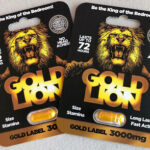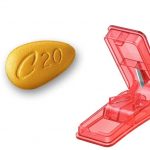Are Rhino Pills Safe to Take?

Rhino pills, popularly sold at gas stations and convenience stores are herbal pills promoted for male sexual enhancement, healthy libido, and the treatment of erectile dysfunction. Men with erectile dysfunction, once called impotence, have trouble getting or sustaining an erection long enough to have sex. It’s a common condition, affecting as many as 30 million American men. Erectile dysfunction affects older men more than younger men. About 1% of men in their 40s, 17% of men in their 60s, and nearly 50% of men 75 or older aren’t able to achieve an erection sufficient for intercourse.
Sometimes erectile dysfunction develops gradually. One night it may take longer or require more stimulation to get an erection. Another time, an erection may not be as firm as usual, or it may end before orgasm. Promoters of the Rhino pills claim their product can improve these symptoms and promote enhanced sexual experience.
Rhino pills are sold under a variety of names, which include:
- Gold Rhino 25000
- Krazzy Rhino 25000
- Mega Rhino 82000
- Platinum Rhino 25000
- Rhino 30000
- Rhino 69
- Rhino 7
- Rhino Blitz Gold
- Rhino x
Most Rhino pills come in similar packaging, with a distinctive design that’s dominated by a large, holographic rhino.
Do Rhino pills work?
According to reviews, many users claim Rhino pills work well. The Rhino Love 97000 pill contains Icariin, an active ingredient in horny goat weed, the substance inhibits the activity of the PDE5 that’s blocking dilation of the arteries in the penis. This allows blood to fill the arteries and the three cylinders in the penis and create an erection. The prescription medication sildenafil (Viagra) works in much the same way. However, there were complaints that the Rhino pills cause Viagra-like headaches. While others seem to be disappointed with the aftertaste it leaves in the mouth.
How long do Rhino pills last?
Questions like how long do Rhino 69 pills last are quite frequent. Anecdotal evidence suggests that some Rhino pills brands provide a rock-like erection for between 2-3 days. This is not surprising because some products contain white willow bark and horny goat weed two herbs used to remedy erectile dysfunction (ED). Promoters of the Rhino 69 pills claim that a single pill can last or provide sexual enhancement for up to 7 days. However, this claim has not been scientifically verified.
How are Rhino male enhancement pills taken?
The manufacturer-recommended dosage for most Rhino pills is one capsule taken 60-90 minutes before sexual activity. Promoters urge people not to exceed one capsule in 2-3 days. Rhino pills are not for use by individuals under the age of 18 years.
What are the side effects of Rhino pills?
Rhino pills can cause several side effects which include:
- Stuffy nose
- Stomach pain
- Upset stomach
- Nausea
- Diarrhea
- Memory problems
- Chest pain
- Severe headaches
- Prolonged erections leading to surgical intervention
- Extreme drops in blood pressure
- Warmth or redness in the face, neck, or chest
This is not a complete list of Rhino pills’ side effects and others may occur. Call your doctor for medical advice about side effects. You may report side effects to FDA at 1-800-FDA-1088.
Are Rhino male enhancement Pills Safe?
No, Rhino pills are unregulated, illegal, and dangerous. According to the Food and Drug Administration (FDA), consumers should not purchase or use Rhino 5 1500 Capsules. This product was identified by FDA during an examination of international mail shipments.
FDA laboratory analysis confirmed that Rhino 5 1500 Capsules contain sildenafil, the active ingredient in the FDA-approved prescription drug Viagra, used to treat erectile dysfunction (ED). This undeclared ingredient may interact with nitrates found in some prescription drugs such as nitroglycerin and may lower blood pressure to dangerous levels. Men with diabetes, high blood pressure, high cholesterol, or heart disease often take nitrates.
In another lab test, the FDA found that the product Rhino 8 Platinum 8000 contained the ingredients sildenafil, N-desmethylsibutramine, phenolphthalein and diclofenac. N-desmethylsibutramine is an ingredient that’s structurally similar to sibutramine — a controlled substance that was withdrawn from the market in 2010 due to concerns about its safety. It was previously used as a weight loss medication.
FDA laboratory analysis also confirmed that Rhino 69 Premium 8000 contains sildenafil, the active ingredient in the FDA-approved prescription drug Viagra, used to treat erectile dysfunction.
Under the terms of the Dietary Supplement Health and Education Act of 1994 (DSHEA), supplements with established ingredients (meaning those that had been sold in the United States before 1994) can be marketed without any evidence that they are effective or safe. For new supplement ingredients, the DSHEA requires manufacturers to give the FDA evidence that a new ingredient should be safe. Regrettably, this aspect of DSHEA has thus far not been enforced, according to a commentary in the New England Journal of Medicine.
Manufacturers and distributors of dietary supplements and dietary ingredients like Rhino male enhancement pills are however prohibited from marketing products that are adulterated or misbranded. That means that these firms are responsible for evaluating the safety and labeling of their products before marketing to ensure that they meet all the requirements of the Federal Food, Drug, and Cosmetic Act as amended by DSHEA and FDA regulations.
Overall, the FDA has identified more than 25 products sold under the “Rhino” brand name that contain undeclared ingredients, often prescription medications.





